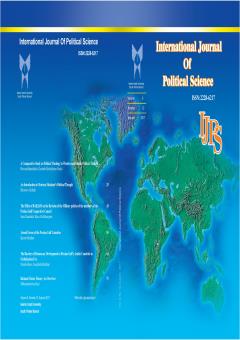The Role of Space in Cooperation and Competition Between Great Powers
Subject Areas : علوم سیاسی
Maryam Dorri Vernosfaderani
1
,
Ardeshir Sanaie
2
*
![]() ,
Alireza Soltani
3
,
Alireza Soltani
3
![]() ,
Kabak Khabiri
4
,
Kabak Khabiri
4
1 - Department of Political Science & International Relations, Central Tehran Branch, Islamic Azad University, Tehran Iran
2 - Faculty of Political Science, Department of International Relations, Central Tehran Branch, Islamic Azad University, Tehran, Iran
3 - Faculty of Political Science, Department of International Relations, Central Tehran Branch, Islamic Azad University, Tehran, Iran
4 - Faculty of Political Science, Department of International Relations, Central Tehran Branch, Islamic Azad University, Tehran, Iran
Keywords: competition, Cooperation, Space, neo-realism, Great Powers,
Abstract :
Space has increasingly shaped the discourse of international relations in the 21st century. Space has always been an attractive area for cooperation and competition between governments and especially great powers. Space is a relatively new and developing scene in the international system. The launch of Sputnik not only created the space race, but also accelerated the arms race and intensified the Cold War between the two rival superpowers. During the Cold War, the United States and the Soviet Union dominated space activities. At the same time as the competition that has formed in space, there are sometimes collaborations, the International Space Station is one of the projects that brings together space countries and is seen as a symbol of cooperation between governments in space. However, there is still a sense of competition for supremacy in space even in the presence of such cooperation among all governments, whether those who are superior in terms of space technology or those who have less technological ability. The main question in this article is what role does space play in cooperation and competition between great powers? The hypothesis is that the great powers were always competing and seeking superiority in space from the beginning, and based on the theory of neo-realism, they cooperate with each other in space only to secure their interests and protect their space assets.

